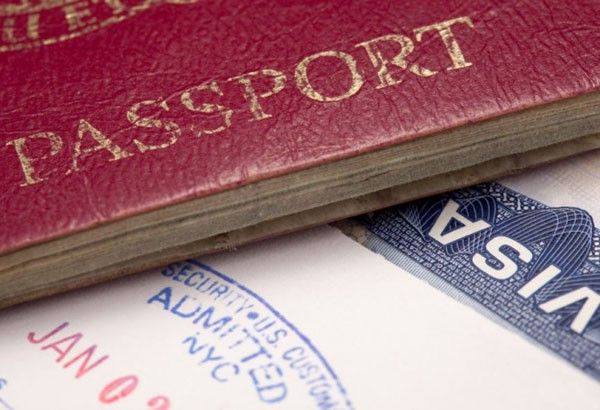IMMIGRATION: Options for working in Australia BY CRISPIN R. ARANDA

GETTING a job offer is just the start of a laborious and tedious selection process. But more on that later.
Protecting the nation’s domestic workers has been the nationalistic mantra of late in the five countries with permanent residency programs, nudged into fierce awakening by the campaign and administration of US President Donald Trump’s “America First” and “Hire Americans First.”
On March 20, 2019, the continent Down Under stepped up to the restrictionist plate.
–THIS SPACE BELOW IS RESERVE FOR YOUR ADVERTISEMENT –

Prime Minister Scott Morrison announced the country’s decision to set a yearly quota of permanent migration at 160,000 for the next four years (2020 to 2023) and introduced new skilled-worker visas to steer migrants away from the big cities.
–THIS SPACE BELOW IS RESERVE FOR YOUR ADVERTISEMENT –

Shift in preference
Australia shifted its migration preference from family-based to skilled migrants as the country’s economy expanded over the past 15 years. For the year 2008 to 2009, skilled visas accounted for approximately 70 percent of all migrants admitted for permanent residency. Family visa share represented roughly 22 percent of the migration planning levels set at 190,300 for that year.
–THIS SPACE BELOW IS RESERVE FOR YOUR ADVERTISEMENT –

In the past five years, permanent resident visas issued were below the yearly target. From the planned 190,000 admission of permanent residents in 2015 to 2016, the program outcome was close to 189,770.
Then three major events shook up the migration landscape: the migrant refugee crisis in Europe, Brexit and the subsequent election of Donald Trump as US president.
–THIS SPACE BELOW IS RESERVE FOR YOUR ADVERTISEMENT –

Pathways narrowed
So, while Australia, the US, New Zealand and the UK compete for skilled migrants, the pathways have been reduced and what remains — narrowed. Even if Trump wants to adopt the points-based system of Australia and Canada, he cannot. Only Congress can change the visa selection and allocation system.
But as president, Trump can make the admissions process extremely difficult — as his executive orders clearly emphasize — the last of which was the “public charge” final rule on Aug. 24, 2019. This inadmissibility rule takes effect October 13 this year.
As a concession, Australia has kept the planned yearly admission of immigrants at the 160,000 level, 110,000 of which are for skilled migrants and 47,000 for family places. A push towards regional migration has been set to steer skilled migrants away from the traditional places of congregation: Sydney, New South Wales, Melbourne, Victoria and Brisbane in Queensland, and Perth,Western Australia.
–THIS SPACE BELOW IS RESERVE FOR YOUR ADVERTISEMENT –

A new visa was created for regional migration and applicants must stay in a region conditionally for at least three years before they can qualify for permanent residency.
Another fly in the ointment is the inclusion of permanent resident visas for applicants from New Zealand in the 160,000 totals. While the planned level is 160,000, New Zealanders who have been in Australia on working or other temporary visas will get first crack at the 110,000-permanent residency in the skilled stream, leaving Asian migrant and other applicants competing for the rest of the remaining places for skilled migrants.
In the past, an average of 40,000 places were granted to Asian applicants living overseas. The scheme to merge the new Kiwi visa with the existing skilled independent program will reduce these visas to just 30,000.
The 160,000 total remains through an executive action by Australia’s Home Affairs Minister Peter Dutton, much like what President Trump seeks to achieve by making it difficult to get immigrant visas through the family preference as well as the temporary and permanent visas for employment-based applicants.
.–THIS SPACE BELOW IS RESERVE FOR YOUR ADVERTISEMENT –

Source countries
The 10 largest source countries of migrants to be affected in descending order are applicants from India, mainland China, United Kingdom, the Philippines, Pakistan, Vietnam, Nepal, Irish Republic, South Africa and Malaysia. For the program year 2017 to 2018, skilled workers from the US replaced the Irish Republic applicants.
The permanent resident pathway is one route. Getting employers for temporary work is another.
.–THIS SPACE BELOW IS RESERVE FOR YOUR ADVERTISEMENT –

How employers fill up vacancies
The Australia government requires employers to prove that they could not find qualified, eligible workers for the job before being offered to overseas applicants. To this end, the Department of Home Affairs publishes a list of occupations that Australian employers must consult before hiring workers outside Australia.
Unskilled or skilled workers not on the current list may also apply, but the employer must hurdle next to improbable obstacles.
Finding a job without a qualified, sponsoring employer is extremely difficult — at best.
Then there are the existing Philippine laws requiring that a Filipino intending to work abroad must have the appropriate or specific work visa and a POEA certification of eligibility. Having a tourist visa is not enough. There have been cases when Filipinos with visitor visas are not allowed to leave (offloaded) because they fit the profile of someone who intends to work overseas.
.–THIS SPACE BELOW IS RESERVE FOR YOUR ADVERTISEMENT –

Questions to be answered
Skilled workers intending to work in Australia must answer three questions.
1. What kind of work do you intend to do?
2. How long is the intended work for?
3. Will the intending work applicant be sponsored or will apply independently?
What kind of work will you do? Air or sea crew; attend or work at a special event/activity; business or investment; represent a foreign government; teach a foreign language or do domestic work (diplomat or consular); participate in a research project; post-study work training and internship; skilled/highly specialized work; working holiday or seasonal work; youth, school or staff exchange program; and work in a Pacific labor scheme-specified industry.
For those intending to engage in skilled work (skilled occupations) or specialized work, there are 42 classes of visas available. The 42 types of visas are further subdivided into the length of stay intended, which leads to question number 2.
How long do you intend to stay? a) up to three months, only one kind of visa; b) up to four years through the temporary skills shortage visa; and c) permanently.
.–THIS SPACE BELOW IS RESERVE FOR YOUR ADVERTISEMENT –

a. Up to three months. Subclass 400 — temporary work (short stay specialist) visa. The highly specialized work stream of this temporary visa is for short-term, highly specialized work in Australia for applicants with specialized skills, knowledge or experience not generally available in Australia. This is the equivalent of America’s H-2B visas.
b 1. Up to 4 years. Temporary skills shortage visa (TSS) with three streams:
1. Short-term stream — must be nominated by an employer for an occupation that is on the short-term skilled occupations. Need minimum two year’s experience, meet minimum English language proficiency standards and have a relevant skills assessment by the specific organization for the occupation.
2. Medium-term stream – same as the short-term stream, except that applicant is already in Australia, except that the nominated occupation must be on the medium and long-term skills shortage list.
3. Labor agreement stream — there are currently four agreements covering seven industries: designated area migration agreement, project-based, global talent scheme and industry labor agreements.
b 2) Subclass 489 skilled regional (provisional) visa. For skilled workers who want to live and work in regional Australia. Applicants may bring family members. This visa subclass 489 is a pathway for the skilled regional (permanent) visa (subclass 887)
Permanent work, either sponsored or as independent applicant:
a. Three visas under sponsored criteria, cost is 4,045 Australian dollars. Processing time from 10 to 15 months. Ninety percent of applications are decided in 15 months.
1. Subclass 186. Employer nomination scheme visa.
2. Subclass 187. Regional sponsored migration scheme visa.
3. Subclass 190. Skilled nominated visa. Applicants must score at least 65 points and below 45 years of age to be eligible under 190.
b. Subclass 189. Skilled independent visa. Same cost – 4,045 Australian dollars. This visa stream is where New Zealanders will compete with Asian and other applicants: Subclass 887, skilled regional visa. for applicants already working in Australia under a subclass or a bridging visa; Subclass 124 and Subclass 858, two types of distinguished talent visa — for people who have an internationally recognized record of exceptional and outstanding achievement in an eligible field. (Both currently unavailable due to low volume of applications.)
Workers in the temporary shortage skilled visas may be sponsored based on the work requirement set by employers for the specific occupations earlier listed, e.g., sea crew, business/investment, representative of a foreign government, research, post-study work training and internship, working holiday or seasonal work, youth, school or staff exchange program and in a Pacific labor scheme-specified industry.
Sea crew and seasonal workers need POEA processing and clearance.
However, the other visa available for temporary work of up to years — skilled worker regional, subclass 489 — requires nomination by a state or territory through the SkillSelect system.
Applicants initially applying under the invited pathway of this stream must pass the English requirement and score a minimum of 65 points.
After that, the skilled worker is out of the woods of temporariness. Permanent residency and permanent employment beckon. That is another story.
———
ADS by Cloud 9:
.
– SPACE RESERVE FOR YOUR ADVERTISEMENT –

.
 All photographs, news, editorials, opinions, information, data, others have been taken from the Internet ..aseanews.net | [email protected]
All photographs, news, editorials, opinions, information, data, others have been taken from the Internet ..aseanews.net | [email protected]
For comments, Email to :D’Equalizer | [email protected] | Contributor
.









